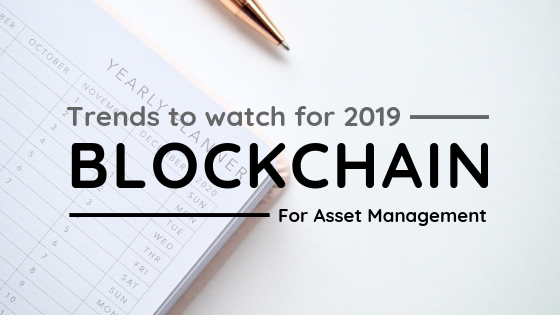With the rise and fall of cryptocurrencies such as Bitcoin, the technology known as blockchain is now being researched by many. It has the potential to be used for vast applications and companies are racing to invest and develop custom solutions that would set them ahead of their competition. Those involved in asset management are also looking to take advantage of blockchain technologies for the ability to trace assets and data back to their original source.
While blockchain technology is not new to 2019, it is the start of the race to find real world applications. Many are still trying to understand the basis of the technology, asking “What is blockchain?” While the answer may seem simple, the problem is that it means different things to different industries. For example, in manufacturing industries that use EAM or CMMS systems to manage their equipment, blockchain would be largely used to manage assets.
For example, when an asset is published, it is assigned a unique identifier that is tied to the person that created it. This is known as a block. When that asset is changed or added to other pieces of data, those events are also tracked. The result is a “chain” of data “blocks”, which can be traced back to the original owner in real-time. Blockchain essentially provides an accurate, and complete history to every maintainable asset.
Such broad technology applications are still in their infancy, yet leading EAM providers such as SAP and IBM Maximo are already investing in it. But what does it mean for asset-intensive companies?
Third Party Communication Made Easier by Blockchain for Asset Management
Blockchain makes it easier for employees to share and integrate assets from outside contributors such as suppliers. With ordering spare parts, assets can be tracked through an EAM system from their creation to delivery at a plant. While this may not seem impressive immediately, the magic lies behind the scenes. Blockchain standardizes data across the board, which means time and money aren’t wasted trying to interpret information from another party. Those that rely on the data will be able to monitor the data of physical parts through a collaborative and standardized solution.
This also increases efficiency and allows managers to make informed decisions, as they can accurately determine when supplies will arrive. Blockchain brings a new age of organization and data management to asset-intensive businesses.
Inspections Made Easier by Blockchain for Asset Management
Quality assurance inspections and warehouse audits are an important part of maintenance operations. These reports provide crucial details on the status of expensive machinery and identify areas of improvement. Sometimes the results of these evaluations can be hard to understand across different divisions within a company, which can lead to misinformation and complications. This happens especially when management attempts to implement changes across their business. With blockchain, employees can monitor the progress of an audit and see the results in an easily digestible format. Furthermore, blockchain can also track the changes made to a specific item’s report, meaning that workers can see what was improved and what needs to be worked on.
How Can We Help?
While blockchain for asset management appears to be a safe haven for data, it won’t succeed if poor EAM data quality bogs it down. We at NRX AssetHub understand that in order to prepare for what’s next, you need to make sure that what you have already is solid. We offer a software solution that works with leading EAM and CMMS solutions such as Maximo and SAP to cleanse, organize and migrate existing asset data. If you are wondering how we can help set you up for success, book a demo or contact us.
Share this article

